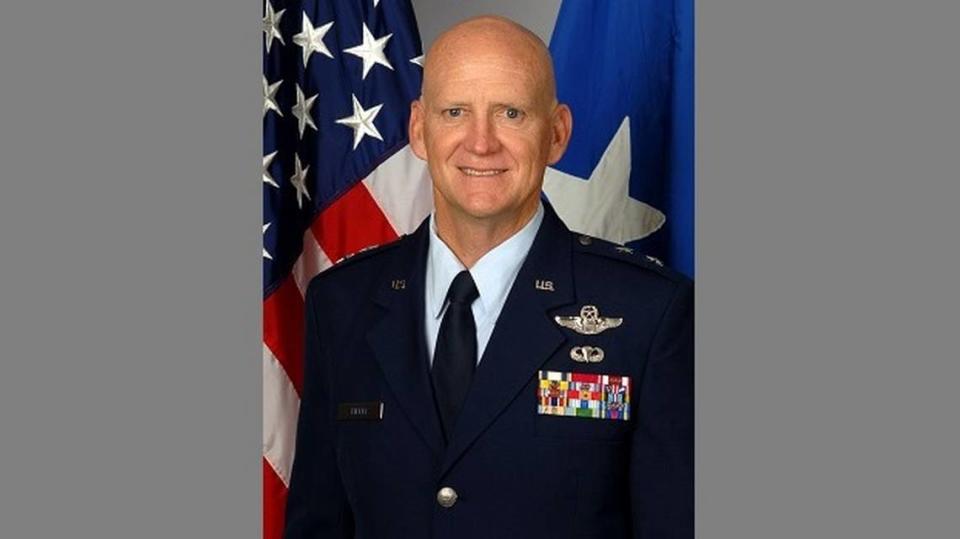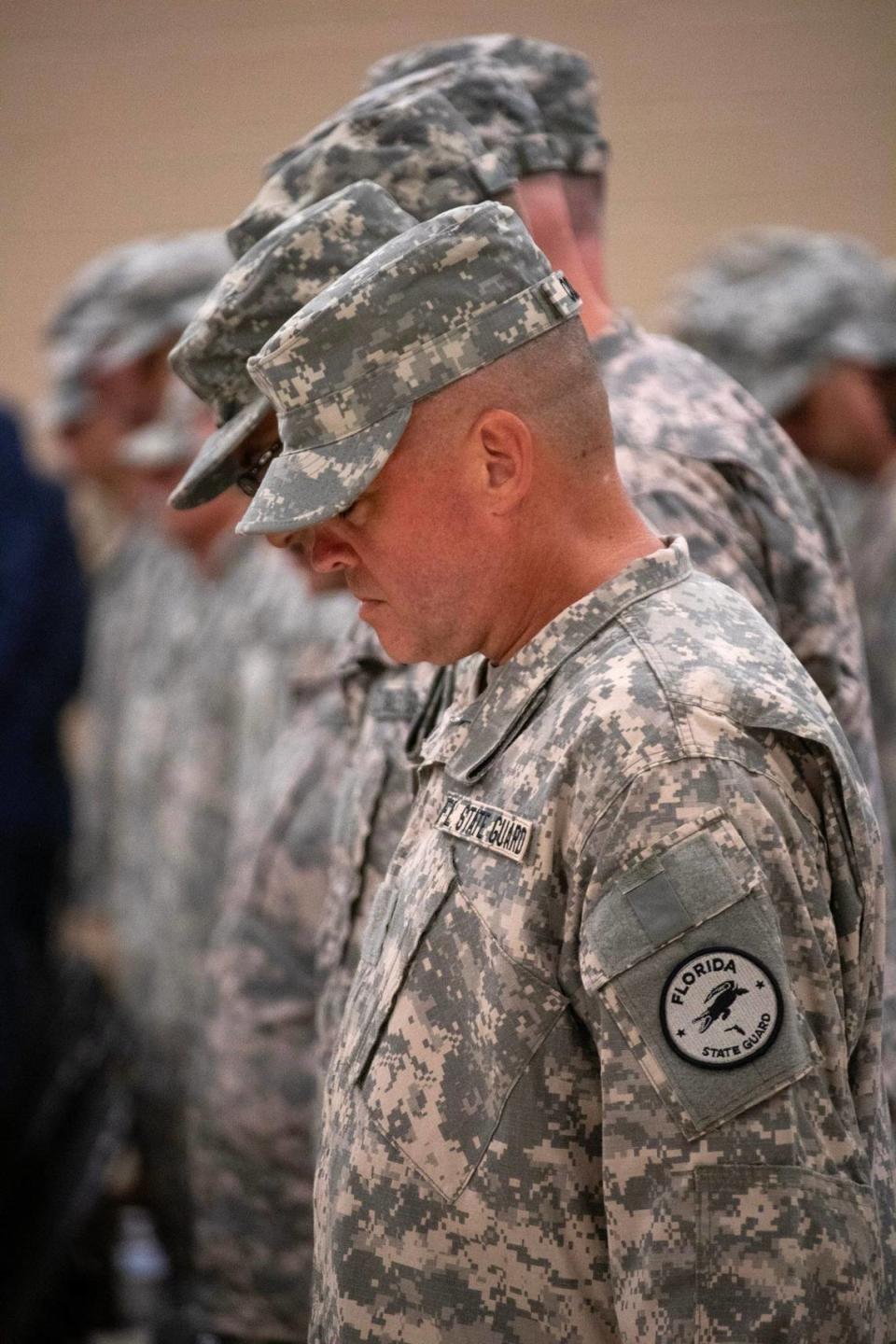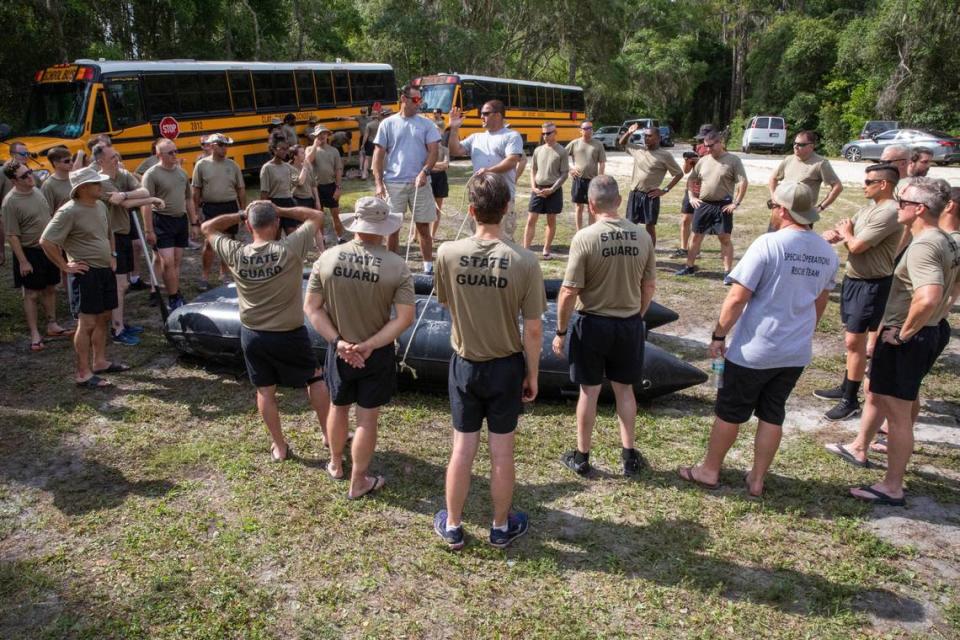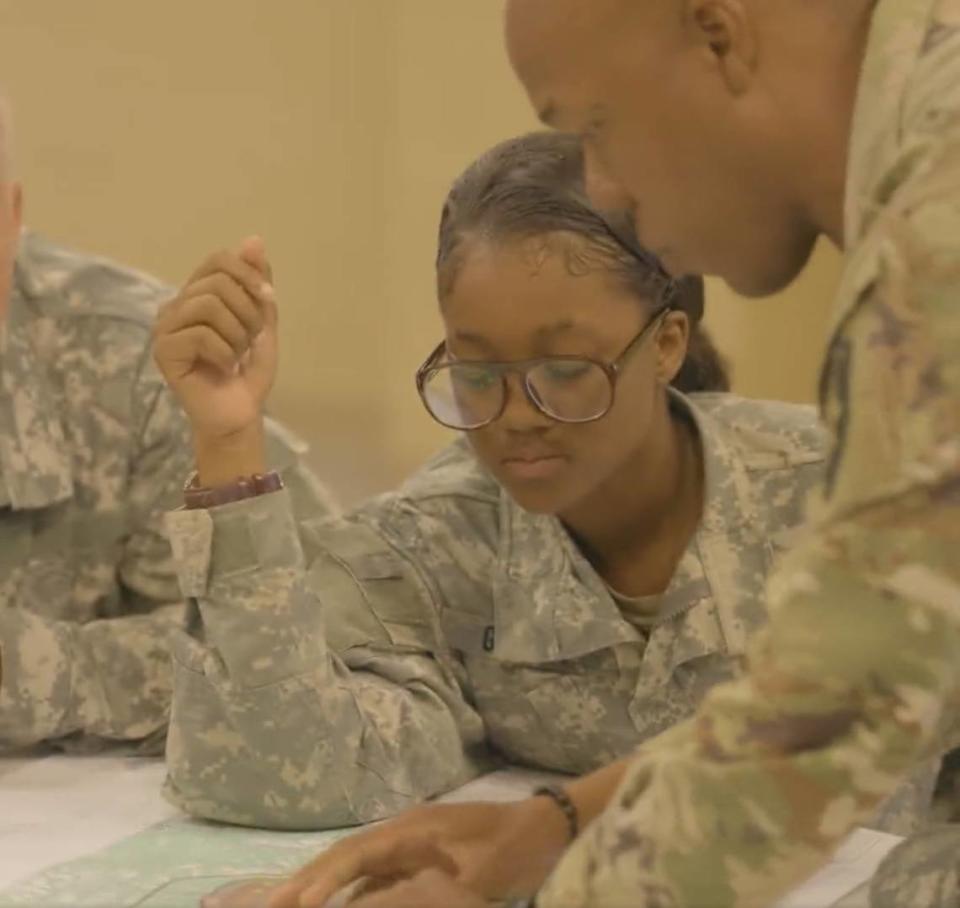After a rocky start, Florida State Guard supporters seek clarity on next steps
- Oops!Something went wrong.Please try again later.
Gov. Ron DeSantis’ nascent State Guard is beset by questions about its direction and leadership as it prepares to train a second round of volunteers for a force seen by some early recruits as more militarized than originally envisioned.
Some people who are interested in joining the volunteer force are not hearing back from recruiters. Others who joined the force this summer have yet to hear back from leadership on future assignments. And the 120-member force of volunteers remains leaderless.
The unknowns are becoming more pronounced as the force’s mission remains broadly undefined, a detail that even those who support it — including a former top Florida military official — say is important to solidify to ensure the entity’s success.
“It’s a big challenge starting an organization,” said James O. Eifert, who served as Florida’s adjutant general until April and helped the governor reactivate the long-dormant State Guard.
READ MORE: Veterans quit as training, mission for DeSantis’ State Guard turn militaristic
DeSantis announced in 2021 he wanted to revive the World War II-era Florida State Guard, saying the force of volunteers would help Floridians during emergencies to supplement the overworked and understaffed Florida National Guard. The unit — which can have up to 1,500 members — has trained 120 members as of June 30.

Eifert said the State Guard has had a slow roll-out, which has been a point of frustration. It has had “a lot of stops and starts,” when it comes to picking leaders, training and launching, he said. But with a $100 million budget, Eifert said he is hopeful things will work out.
“I would tend to give them grace for a little while as they kind of find their footing and get this thing running,” Eifert said in an interview on Wednesday.
A lot of the issues, however, appear to stem from a lack of communication and a clear vision.
Officials with the organization have said that members “will stand ready to respond to disasters in our state at a moment’s notice” after going through a “highly disciplined training to ensure they have the mental, physical, and professional readiness to save lives.” The State Guard’s website says members will respond to natural disaster, and in a statement last week, officials said they would also aid “law enforcement with riots and illegal immigration.”
But officials have not answered other questions. Among them, how the State Guard plans to use its specialized law enforcement unit, whether trained members will be ready to be deployed during this year’s hurricane season, when members will have their next drill, how many volunteers have been recruited for the next training in January or who is overseeing the State Guard in the absence of a director and other administrative officials who recently left the organization.
Marine veteran was an early advocate
Jim Stephens, a 63-year-old Marine veteran from the Panhandle who has been pushing to reestablish the State Guard in Florida since 2018, has been administering a Facebook group that has become a hub for those who support the idea. As of Thursday, the group has almost 850 members.
In 2021, the Florida National Guard approached Stephens. The Guard was looking for volunteers for the newly established State Guard, he said. Stephens said he gave them hundreds of names from an “interest list” he had put together.
In recent weeks, many members have turned to the Facebook group to seek details for the next training in January, get clarification on eligibility requirements and the application process, and to scour information about who will be leading the force in the future.
“There’s no structure that we can tell. All it is right now is a good-looking website that made a couple of hype videos,” Stephens said.
READ MORE: DeSantis seeks a lot more for fledgling State Guard: Planes, boats, police powers
In June last year, DeSantis named Chris Graham, a decorated Marine and Purple Heart recipient from Miami, as director of the State Guard. He died by suicide in October, according to a police report. In January, DeSantis named the program’s deputy director, Luis Soler, to lead the force. Soler left the post earlier this month for personal reasons, the governor’s office announced.
“They’re saying the volunteers of the Florida State Guard are ready to respond,” Stephens said. But, he paused and asked: “Respond to what? And how?”
Members of the volunteer force have been instructed not to share information with outsiders.
To Stephens, it’s important for the state to educate the public about what the State Guard is and is not. That’s not only so that the public knows what its mission will be, but also so people who are interested in joining know exactly what they are getting into, he said.
In June, Stephens asked members of his Facebook group if State Guard members were sporting a shoulder patch on their uniforms as members of a military unit would be. Two recruits responded by saying they were not allowed to share any information as trainees. One added: “They are monitoring what we post.”
Photos taken at a graduation ceremony show that recruits did have a shoulder patch on their combat-style fatigues. The patch features a gator surrounded the words Florida State Guard, two stars and an outline of the state of Florida.
Stephens scoffed when asked about the hush-hush nature of the operation and the training.
“This is not SEAL Team Six. This is not the Ranger battalions or Special Forces. This is the State Guard,” he said. “If there was a classified mission going on, it probably shouldn’t be with the State Guard.”

Lack of clarity
In the year since its launch, there have been complaints of a lack of communication and clarity on the force’s mission and training plans.
And according to records reviewed by the Herald/Times and interviews with program volunteers, a number of recruits quit after the first training class in June because they feared it was more militaristic than they had anticipated. Among those who complained was a retired Marine Corps captain who filed a battery and false imprisonment complaint against Guard instructors.
Following the June 30th graduation, more questions are emerging.
And effective July 1st, a new state law restructured the force. It now can have a specialized law enforcement unit with police powers and the authority to bear arms, and all administrative duties and powers have been transferred from the state adjutant general to the State Guard director, a position that has been vacant for a couple of weeks.
The Florida State Guard is considered a civilian defense force and falls under the command of a director, who is appointed by DeSantis. State Guards in 18 other states are under the command of their adjutant general or Department of Military Affairs.
The governor’s office did not respond when asked about the change in the structure.
“It’s very unusual,” said Jean Marciniak, a former member of the New York State Guard and an administrator of StateDefenseForce.com, a website for history and news about the nation’s state defense forces.
Marciniak raised concerns about the Florida State Guard’s lack of a formal military structure, including the absence of ranks among the first class of graduates. Without that command structure, he said, the organization has little accountability.
Under military law, soldiers are not allowed to abandon their posts and can face jail time for doing so. A civilian defense force does not have those requirements. Marciniak is concerned that this could create “heavy future liabilities” for volunteers and the community they are called to serve.
“If you deploy a unit from the Florida State Guard to go and rescue 100 people trapped on roofs, what’s the rank structure? Who is in charge? What if some of the volunteers decide, ‘I don’t want to do this, this is too risky, I’m going to go home?’ ” Marciniak said.
Following a public poll conducted in June, StateDefenseForce.com elected not to endorse the Florida State Guard. A letter published on the site echoes Marciniak’s concerns over the way the State Guard has been structured as a civilian agency.
StateDefenseForce.com took the Florida State Guard off its website and no longer reports on anything related to the organization. Marciniak says he considers it a state defense force “in name only.”

The original vision
In 2019, the idea of a State Guard was not something that Florida officials had endorsed.
In a letter reviewed by the Herald/Times, Eifert, then the adjutant general, argued against reactivating it, saying in part that there was “little apparent need” for one. His letter was sent to Stephens, who had been pushing for the reestablishment of the State Guard in Florida.
Establishing a State Guard, Eifert argued at the time, would come with some challenges. He said there were not enough state resources to sustain one, pointing to equipment, personnel and administrative costs, while noting that Florida taxpayers would be financially liable for injuries to State Guard members as well as anyone they may injure while on duty.
At the time, Eifert said in an interview that he was focused on growing the Florida National Guard. But his position changed when he could not get support from the federal government to grow the Guard. At the time, the National Guard was also responding to the pandemic and other emergencies — including sending troops to train Ukrainian soldiers — underscoring the strains facing it.
“I kind of felt like, as much as I may not want to do this, I really owe it to the governor to have a more robust, capable force that can help to make up for my lack of size,” Eifert said. Florida has one of the smallest National Guards on a per-capita basis.
The idea, he said, was to have a State Guard that could help with shelter management, traffic control as well as food and water distribution — to support the Florida National Guard and potentially free Guard soldiers to do more important things. There was also the potential for other missions, Eifert said, including recruiting engineers to address cybersecurity issues in the state.
He workshopped the idea with Chris Spencer, DeSantis’ director of policy and budget, in the fall of 2020 — and a few months later, the governor announced that he was pushing to reinstate the State Guard that would answer to governors during emergencies.
“The bureaucrats in [Washington] D.C. who control our National Guard have also refused to increase the number of guardsmen despite our increasing population, leaving Florida with the second-worst National Guardsman-to-resident ratio,” said DeSantis.
This year, DeSantis has spent millions of dollars to support the Florida National Guard’s response to states of emergency he has declared related to “illegal migration” in Texas and South Florida. In 2020, DeSantis agreed to send National Guard troops to Washington, D.C., to respond to protests after the killing of George Floyd in police custody.
But Eifert’s vision of the State Guard, as implemented in the first iteration of the law, has changed. Among the changes: The force is no longer under the adjutant general.
When asked about the change, Eifert suggested that putting the State Guard under the direct supervision of a governor-appointed director “might be a better way to do it,” because it would not burden the adjutant general — who controls all Florida units of the National Guard with about 11,000 members — with the task of standing up a brand new organization.
In his view, for the State Guard to be successful, it needs “good leaders, good training and good funding.”
The money — a $100 million budget — is solid for now, he said. The rest will depend on who the leaders are and how the force is trained.


